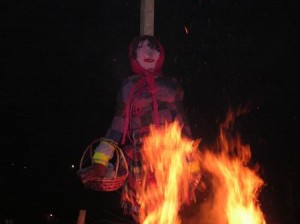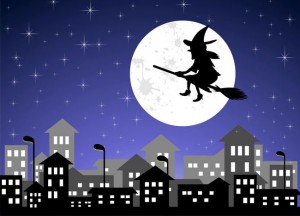Venice-“burning the old woman”or “burning the witch”
 The origins of the ritual of “burning the witch” are very old and is linked to the tribal reverence that entire agricultural civilizations had with Mother Earth , in particular , it wants to celebrate the victory of the summer to the bad and sterile winter.
The origins of the ritual of “burning the witch” are very old and is linked to the tribal reverence that entire agricultural civilizations had with Mother Earth , in particular , it wants to celebrate the victory of the summer to the bad and sterile winter.
L’essence of the ceremony is intended to enhance and bring fertility to the fields.
La Befana (Epiphany), corruption lexical Epiphany (from the greek epifaneia ) through bifanìa and Bethany , is a folk figure linked to the Christmas holidays , which was typical of some Italian regions and then spread throughout the Italian peninsula,less known in the rest of the world.
 the night between the 5th and 6th of January (the night of the Epiphany ) and fill the stockings left by them, specially hanging on fireplace or near a window . The children who during the year have been good, will receive sweets,candy , nuts or small toys . On the contrary, those who have misbehaved find stockings filled with coals. The origin of that feast was probably connected to a set of pagan rites , dating from the tenth to sixth centuries BC, about the seasonal cycles related to agriculture , or related to the harvest of the past year , now ready for reborn as a new year, widespread in Central and South America , and then across the peninsula .
the night between the 5th and 6th of January (the night of the Epiphany ) and fill the stockings left by them, specially hanging on fireplace or near a window . The children who during the year have been good, will receive sweets,candy , nuts or small toys . On the contrary, those who have misbehaved find stockings filled with coals. The origin of that feast was probably connected to a set of pagan rites , dating from the tenth to sixth centuries BC, about the seasonal cycles related to agriculture , or related to the harvest of the past year , now ready for reborn as a new year, widespread in Central and South America , and then across the peninsula .
On the day of the Epiphany, in various countries of the North – East of Italy , including Venice (Saint Erasmo island) , we are witnessing a tradition that attracts hundreds of people:
“The burn of the old woman”
“The old woman was carried in procession , surrounded by a procession of boys with pots and sticks procured a terrible noise . This serve to revive the sad atmosphere of Lent.
Over a large wagon a huge puppet from human forms , the Old : curve , battered , his nose hooked immeasurable .
But who was the “old” ? Returning to the symbolism , the old woman was a wooden puppet who often held in his hands the spindle and distaff ( always refer to the time that passes ) and was filled with grapes and figs , chestnuts, bean , apples and small gifts to the villagers who dispensed before being burned at the stake , a sign of the old year dying
offering the “seeds ” from which would grow the new year (hence the custom of the reading of the will .) The presence of the cot is the symbol of fertility , the old attribute that certainly lost , but that does not matters, what matters is the essence of the ceremony itself which no doubt is intended to enhance and bring fertility to the fields.
She was paraded through the village, door to door , as if it were an evil deity . Becoming the scapegoat , was charged with the responsibility for everything bad happened in the world,or consumed in the small community where the ritual .
During the course of the mournful procession , the order is maintained by another shocking and grotesque character : the Harlequin . But that’s not typical of carnival cheerful figure , in fact, on this occasion appears in its original version , the one linked to the agrarian cults . The mask does not occur with the famous colorful costume , but shabby and dirty face of coal taken directly from hell. He wears a hat ,and in his hair has a rat and a stuffed snake. In ancient times,to this demon were attributed  enormous size ,and just like those of old times, armed with a club led the ” Furious army .”
enormous size ,and just like those of old times, armed with a club led the ” Furious army .”
After a summary trial where they will be listed in the misdeeds she made during the crop year ,the old woman was going to die in a nearby field ” asfegher ” (not seeded)
. Her end was horrible, burnt alive after a summary trial .The fire that “burns the winter ” opens the doors to the arrival of summer , is hailed as an event and hope to reborn.
Most of us celebrate, probably without being aware of, the death of the old year, the end of winter, the old mother nature which will let place to the young nature, in other words the new year’s spring. The “crone” embodied the old year is useless . The Bonfire of the old is ultimately an act of purification and there is no doubt that it is the result of a merger between disparate elements from archaic source .
The Church, however, did not take kindly to this event, which often falling in the middle of Lent, it seemed discontinue the character of purification and penance. The process to the old , became gastronomic Carnival orgies , and therefore the exaltation of purification and abstinence of Lent, but also the memory of the sure fate :man’s death.
other aritcles: http://dipoco.altervista.org/articles/
visit my website : http://ginocosta.altervista.org/